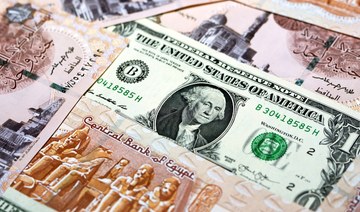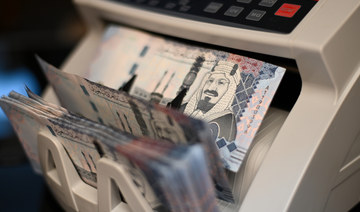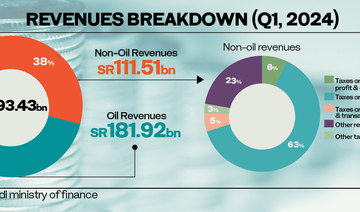STUTTGART, Germany: Automakers around the world are pushing hard for new networks that can charge electric cars fast. In Europe, some power companies and grid operators are testing whether it might be smarter and cheaper to move into the slow lane.
A 15-month study of electric car charging behavior in Germany has concluded that consumers can be persuaded to accept slow, overnight recharging that could help avoid brownouts from surges in electricity demand or costly upgrades to power grids.
The prospect of millions of EVs hitting the roads as governments gradually ban new diesel and gasoline cars is seen as a major challenge for power companies, especially in Germany which is switching from nuclear and coal to less predictable sources of energy such as wind and solar.
The small study in the wealthy Stuttgart suburb of Ostfildern-Ruit though has helped alleviate the concerns of some grid operators that too many electric vehicles (EVs) charging at peak times could cause network crashes.
The engineers at Netze BW, the local grid operator behind the trial, found that all the households involved came around to leaving their electric cars plugged in overnight and only half ever charged simultaneously.
“Since the experience with the project we have become a lot more relaxed. We can imagine that, in future, half of the inhabitants of such a street own electric vehicles,” said Netze BW engineer Selma Lossau, project manager for the study.
Still, with limited EV battery ranges for now, slow, overnight charging doesn’t get around the problem of how to persuade drivers to ditch petrol cars altogether.
Without a network of fast-charging stations offering quick refueling, drivers may be wary of using EVs for long trips — which is why some automakers want lots of fast-charging stations to encourage the widespread adoption of electric cars.
Slower, or delayed, charging has already gained traction in Norway, Europe’s leading EV market, where nearly 50% of new car sales are zero-emission vehicles.
A study by energy regulator NVE showed that Norway faces a bill of 11 billion crowns ($1.2 billion) over the next 20 years for low- and high-voltage grids, substations and high-voltage transformers — unless it can persuade car owners to charge outside peak afternoon hours.
The investment cost to the country of 5.3 million people could drop to just over 4 billion crowns if cars are charged in the evening, and may fall close to zero if batteries are only plugged in at night, NVE said.
NVE is now working a tariff proposal which will penalize peak-hours charging. Tibber, a Norwegian power company, already offers cheaper electricity for EV charging if you let it decide when your car is charged while firms such as ZAPTEC offer ways to adjust charging to the available grid capacity.
Some of the 10 households participating in the Stuttgart trial said they initially wanted to keep topping up their cars for fear of running out of juice, but soon adapted to leaving the power company to handle it as it saw fit overnight.
“At the start, I did not want to take any risks and charged frequently in order to feel secure. Over time, I changed my outlook,” said Norbert Simianer, a retired head teacher who drove a Renault Zoe during the trial. “I grew used to the car and became more at ease in handling the loading process.”
Simianer and his neighbors were given electric cars and 22 kilowatt (kW) wall-boxes for their garages, alongside two charging points in the street, all free of charge.
In return, they gave up their normal cars and allowed Netze BW, which is a subsidiary of German utility EnBW, to monitor and carry out a deferred and down-scaled charging process during a seven-and-a-half-hour period overnight.
Netze BW tried various options, either slotting cars in at the maximum 22 kW charging flow one after another, or lengthening the charging time for individual cars by adjusting the power flow, or combining both methods, Lossau said.
The participants, who used apps to check the status of their car batteries, grew accustomed to the lack of instant charging capability because their vehicles could always handle their everyday commutes of up to 50 km (31 miles).
EnBW said nine of the 10 households in the trial on Ostfildern-Ruit’s Belchenstrasse had opted to keep the wall-boxes and most were exploring leasing electric car.
Lossau said monitoring 10 households did not in itself provide the “empirical mass to draw conclusions for the load profile of all of Germany.”
She also said there would need to be better two-way communication between EVs, the grid and consumers for the system to function efficiently on a large scale.
“There will have to be more exchange of information between e-cars and the grid to update the loading status in real-time, because otherwise, there can be the wrong impression about the speed of loading,” she said.
Utility companies developing so-called vehicle-to-grid (V2G) services, however, are struggling to persuade some automakers to use technology that allows two-way flows of information, and power, between batteries and grids.
Carmakers such as Volkswagen, Daimler and Ford, for example, are prioritising one-directional fast-charging instead to overcome consumer resistance to EVs.
Japan’s Nissan has been leading the way among carmakers exploring V2G though Germany’s BMW has now decided to develop it too, saying cooperation between cars and grids will be key to making e-mobility ready for mass markets.
“It is about making sure there is enough supply for the electric cars and that the lights do not go out elsewhere,” a BMW spokesman said. “The cars don’t just load when it’s best for the market, but they can also supply power back to the grid to help even out demand spikes.”
“There has to be more progress on the data exchanges, however. It is not yet the standard,” he said.
Nevertheless, the Ostfildern-Ruit trial has raised hopes that power grids might be able to cope with an influx of electric cars, especially if the consumers play ball.
Even if drivers resist overnight charging, suppliers of software and equipment to power grids, such as Germany’s Siemens , are also looking at safer and more efficient ways to manage how and when power is used to charge cars.
The German city of Hamburg, for example, started a three-year pilot project this month with Siemens to pre-emptively identify overloads on transformers and along cables, and manage EV charging points accordingly.
“Loading processes offer so much flexibility that the overload on the networks can be reduced by deferring loading times or reducing the load that is supplied,” said Thomas Werner, expert at Siemens Digital Grid.
“This happens through the digitization of hardware and software and with communication technology,” he said.
Using software to help protect aging power networks from predictable surges could also avoid costly hardware upgrades to parts of the 1.7 million km of distribution grids in Germany.
With few than 100,000 electric-only cars in Germany at the moment, there is little threat of blackouts from over-demand. But the Transport Ministry in Berlin envisages up to 10 million electric cars on the roads by 2030.
The number of charging points across the country also only stands at 21,000. That’s up 50% over the last year but still barely a fraction of future needs.
Next up for Netze BW is a trickier test.
Managing the power for 10 households with electric cars in a suburban street of 22 homes is one thing, now the power company is launching a study of car charging behavior in an apartment block with 80 flats, where quarrels over access are likely.
It is also looking at a study in rural areas, where the longer cables required present challenges in maintaining stable voltages for charging.
But that’s still only part of the story. Lossau said power companies would have to work more closely with carmakers to fill knowledge gaps and exchange information.
“It can only work if we get more data from each other.”
Can power napping solve electric car charging challenge?
Can power napping solve electric car charging challenge?
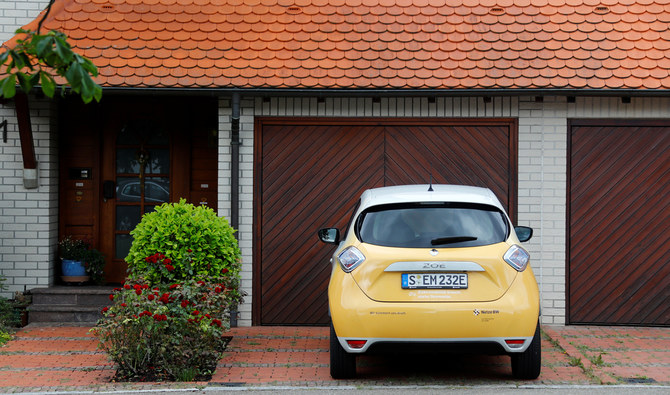
- German utility is studying electric car charging behavior
- Results show drivers accept overnight charging
Egypt’s non-oil business shrinks for 41st straight month, PMI shows
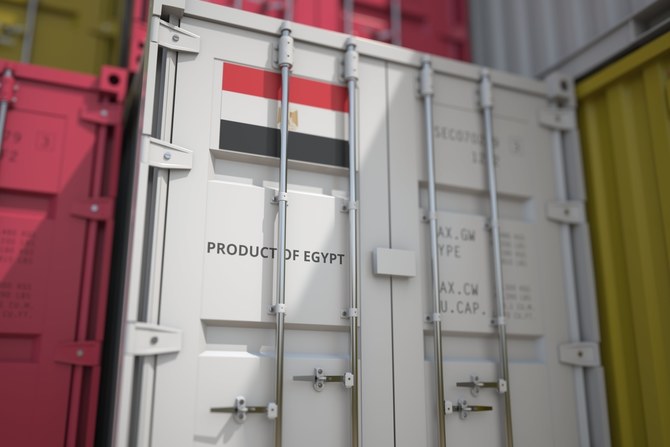
CAIRO: Egypt’s non-oil private sector continued to shrink in April despite a $35 billion investment deal signed with the UAE in February and an $8 billion International Monetary Fund agreement in March, a survey showed on Wednesday.
The S&P Global Purchasing Managers’ Index for Egypt edged down to 47.4 in April from 47.6 in March, remaining below the 50.0 threshold that separates growth from contraction for a 41st consecutive month.
“Business activity once again fell markedly as firms commented on difficult market conditions, with the decline leading to a renewed drop in employment,” S&P Global said.
The employment sub-index slipped to 49.7 in April from 50.8 in March.
Egypt signed an agreement with the IMF on March 6, with an initial $820 million payout received in April and a second, $820 million payout expected after an IMF review in June.
In granting the financial support, the IMF cited shocks to the Egyptian economy from the crisis in neighboring Gaza. Egypt devalued its currency on March 6 and hiked interest rates by 600 basis points as part of the deal.
The output sub-index climbed to 44.8 in April from 44.5 in March and the new orders index improved to 45.5 from 45.0. Business sentiment also improved, with the future output expectations index climbing to 55.3 in April from 52.2 in March.
“Sentiment was at a six-month high, reflecting hopes of exchange rate stability, lower prices and better material availability,” S&P Global said.
Meanwhile, global ratings agency Fitch last week revised Egypt’s outlook to positive from stable.
The agency affirmed Eygpt’s rating at ‘B-,’ citing reduced external financing risks and stronger foreign direct investment.
Foreign investors have poured billions of dollars into Egyptian treasury bills since the country announced the IMF loan program. After the investment in the country’s foreign portfolio and the support from the UAE, Egypt’s net foreign assets deficit shrank by $17.8 billion in March.
Fitch says that initial steps to contain off-budget spending should help to reduce public debt sustainability risks.
The country straddles North Africa and West Asia and has been grappling with an ongoing economic crisis linked to persistent foreign currency shortages. In the fourth quarter, its foreign debt climbed by $3.5 billion to $168.0 billion.
Meanwhile, Moody’s also revised its outlook on Egypt to “positive” in early March while affirming its ratings due to the high government debt ratio and weaker debt affordability compared to its peers.
Oil Updates – prices dip on rising US stockpiles, cautious supply expectations

NEW YORK: Oil prices fell in Asian trade on Wednesday as industry data showed a pile-up in crude and fuel inventories in the US, a sign of weak demand, and cautious supply expectations emerged ahead of an OPEC+ policy meeting next month, according to Reuters.
Brent crude oil futures fell 57 cents, or 0.69 percent, to $82.59 a barrel by 9:45 a.m. Saudi time. US West Texas Intermediate crude futures fell 53 cents, or 0.68 percent, to $77.85 a barrel.
Both benchmarks fell marginally in the previous session on signs of easing supply tightness and weaker global oil demand from an Energy Information Administration forecast report on Tuesday.
US crude stocks rose by 509,000 barrels in the week ended May 3, market sources said, citing American Petroleum Institute figures. Gasoline and distillate fuel inventories also rose, they said.
“API numbers released overnight were moderately bearish due to stock builds in both crude and products ... Concern over weaker-than-usual US gasoline demand and this stock-build have weighed on the prompt RBOB gasoline crack,” ING analysts said in a client note.
Official US government data on stockpiles is due at 5:30 p.m. Saudi time. Analysts polled by Reuters expect US crude oil inventories to have fallen by about 1.1 million barrels last week.
Cautious expectations on supply cuts from the Organization of the Petroleum Exporting Countries and its allies ahead of a June 1 policy meeting also weighed on markets.
“Oil prices have come under further pressure as noise around OPEC+ production policy grows,” the ING analysts said. “Expectations are that members will extend their additional voluntary supply cuts beyond the second quarter of this year.”
Meanwhile, hopes of a ceasefire in Gaza have also put pressure on oil prices in recent sessions, with some analysts saying the risk premium on oil declined in tandem.
“The fall in oil prices since Iran and Israel’s back-and-forth attacks suggests that some of the risk premium in prices has now unwound,” said economist Bill Weatherburn from Capital Economics in a client note.
“Prices continue to be supported by OPEC+ production cuts but we suspect that members will gradually unwind these cuts from July, pushing oil prices lower,” he added.
The US believes negotiations on a Gaza ceasefire should be able to close the gaps between Israel and Hamas. US Central Intelligence Agency Director Bill Burns will travel to Israel on Wednesday for talks with the Israeli Prime Minister Benjamin Netanyahu and other top officials, a source familiar with the matter told Reuters.
Some analyst expectations that short-term demand remains well-supported limited overall price declines.
“Much talk of economic run cuts in recent weeks is overblown in our opinion, with margins still healthy enough, which means rather that Asian demand could rather pick up once turnarounds peak and diminish,” said Sparta Commodities analyst Neil Crosby.
Saudi Arabia transforms SWCC into water authority to boost security
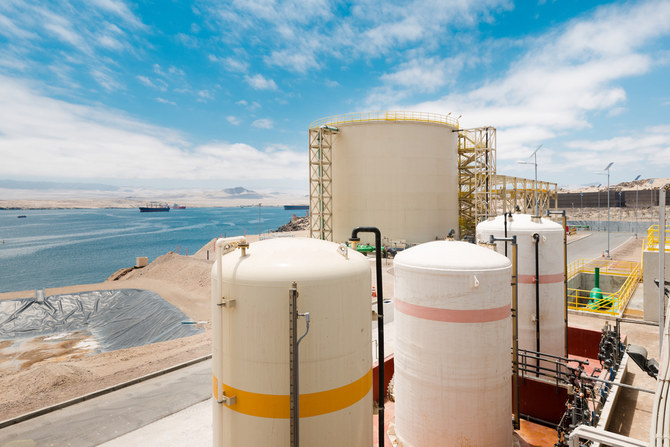
RIYADH: Saudi Arabia’s efforts to bolster its water security received a significant boost with the restructuring of the Saline Water Conversion Corp. into the Saudi Water Authority.
This transition, which includes the adoption of new organizational frameworks, aims to enhance oversight of water-related activities, optimize regulations, improve service management, and foster methodological development.
The approval from the Saudi Cabinet, chaired by King Salman bin Abdulaziz Al Saud, will further bolster the sustainability of water resources and advance the objectives of the National Water Strategy, aligning closely with the goals outlined in Vision 2030. Under the new regulations, the SWA will be tasked with developing and refining policies, plans, programs, and initiatives pertaining to the water sector.
Additionally, it will establish the requisite standards and regulations for licensing within its jurisdiction. Moreover, the authority will work to unify technical and engineering standards across the water sector to ensure adherence to local content and sustainability standards.
Saudi bank loans up by 11% in March to hit $712bn
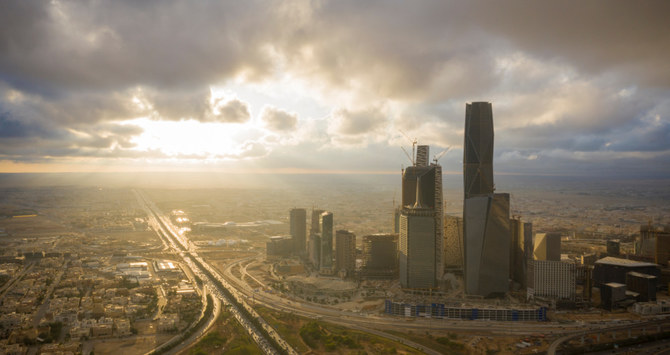
- Real estate financing for corporate dealings specifically surged by 27 percent
RIYADH: Saudi banks’ loans totaled SR2.67 trillion ($711.5 billion) in March, marking an 11 percent increase as compared to the same month in 2023, according to the latest official data.
Figures released by the Saudi Central Bank, also known as SAMA, showed personal borrowings accounted for 35 percent of this growth, while the remaining 65 percent went to the corporate sector, particularly for real estate activities, as well as electricity, gas, and water supplies.
Real estate financing for corporate dealings specifically surged by 27 percent in the third month of the 2024, marking the highest annual growth rate in 10 months, reaching SR275.2 billion.
A study by Mortor Intelligence, which used 2023 as a base year, estimated the Kingdom’s real estate market at $69.51 billion in 2024, and expects it to reach $101.62 billion by 2029, growing at a compounded annual growth rate of 8 percent between 2024 and 2029.
The surge in real estate and construction endeavors may have heightened the need for debt-based financing primarily sourced from the local banking sector. Saudi banks play a central role in the provision of loans for real estate projects.
According to SAMA data, new retail residential mortgage loans experienced a notable increase, reaching a 14-month high at SR7.63 billion in March. This marked a 5 percent rise compared to the amount granted in the same month last year and a 10 percent increase from the previous month.
HIGHLIGHTS
• New retail residential mortgage loans experienced a notable increase, reaching a 14-month high at SR7.63 billion in March.
• SAMA data also revealed that financing for professional, scientific, and technical activities soared by 54 percent, hitting SR6.4 billion.
In March, lending for home purchases accounted for the largest portion, comprising 64 percent of new mortgages to individuals, totaling SR4.91 billion. The most notable growth, however, was observed in apartment loans, surging by 28 percent to reach SR2.24 billion. Meanwhile, land loans experienced a more modest growth of 4 percent, reaching SR474 million in new mortgages.
One factor contributing to this growth could be the need for residential properties from expatriates arriving in the Kingdom, along with government initiatives aimed at modernizing the financial system.
In a March study by Knight Frank, a notable trend emerged among expatriates, with 68 percent expressing a strong preference for owning an apartment rather than a villa. This inclination was especially prominent among individuals aged 35-45 and 45-55.
Growth in lending for electricity, gas and water supplies came as the second contributor in corporate loans after real estate, registering an annual rise of 27 percent to reach SR147.42 billion in March.
According to an April report by Global Data, the key sectors in the Saudi Arabia power market are the residential sector, commercial sector, industrial sector, and others. In 2023, the residential sector had the dominant share in the power consumption market.
SAMA data also revealed that financing for professional, scientific, and technical activities soared by 54 percent, hitting SR6.4 billion, marking the highest annual growth rate among sectors.
Education loans also showed robust growth, with an annual increase of 28 percent to reach SR6.27 billion. Additionally, financing for administrative and support service activities rose by 20 percent, totaling around SR34.22 billion.
Budget deficit is ‘intentional’ to ensure sustainable development
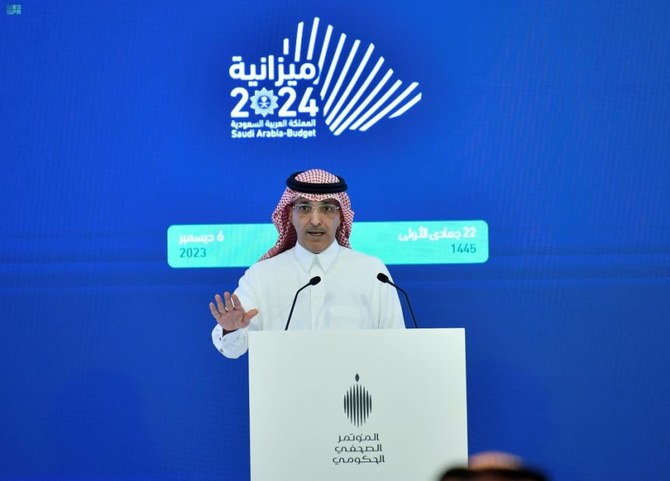
- ‘As long as deficit is directed toward productive expenses, it is acceptable,’ says Al-Jadaan
RIYADH: Saudi Finance Minister Mohammed Al-Jadaan on Tuesday said the Kingdom is intentionally running a budget deficit to achieve its development goals.
The Finance Ministry announced the quarterly budget performance report on Sunday. As per the report, the Kingdom posted a deficit of SR12.4 billion ($3.3 billion) in Q1, marking the sixth consecutive quarterly deficit with revenues amounting to SR293.4 billion and expenditures hitting a record SR305.8 billion.
“We’re intentionally running a sustainable deficit for economic development, contrasting with mandatory borrowing in some nations for essential but unproductive expenses,” the minister told Al-Eqtisadiyah in an interview.
He said the deficit is not merely a consequence but an attempt to achieve development goals. The minister said the government prioritizes spending to accelerate the implementation of its development strategies and projects.
Al-Jadaan also shed light on the overall situation of the global economy and how Saudi Arabia’s prudent fiscal policies have supported growth and enhanced the Kingdom’s resilience in dealing with changes.
HIGHLIGHTS
Efforts are underway to attract domestic and foreign investments that stimulate economic growth and contribute to reducing the budget deficit.
Strategic spending has a multiplier effect on the economy, like creating jobs and enhancing trade through infrastructure investments.
Saudi Arabia is committed to optimizing government expenditures by directing them toward promising strategies.
Regarding the budget deficit and its potential impact on the economy, he reassured citizens that managing the budget deficit is a top priority.
The minister clarified that as long as the deficit is directed toward productive expenses, the government views it as acceptable, as it generates economic returns that exceed the cost of debt.
Highlighting sustainable financial policies, Al-Jadaan cited the government’s efforts to reduce its reliance on oil revenues by diversifying sources of income.
He said non-oil revenues made up 38 percent of the total income in 2023, compared to 9 percent in 2015. The minister said the ratio of non-oil revenues to covering expenditure ceilings was about 17 percent in 2015 and surged to reach 35 percent in 2023.
Al-Jadaan said: “Financial policies can enhance financial inclusion and access to funding, both vital for supporting entrepreneurship, small and medium-sized enterprises, and innovation. This contributes to achieving the goals of Saudi Vision 2030, which has succeeded in unprecedented achievements across various sectors.”
He also addressed the efficiency of government spending and its pivotal role in fostering economic development and bolstering economic resilience.
“We are committed to optimizing government expenditures by directing them toward promising strategies aimed at diversifying the economic base,” the official added.
He said by the end of 2023, total government spending had reached approximately SR1.29 trillion, reflecting continued progress in implementing initiatives and structural reforms.
These initiatives include regional and sectoral strategies supportive of structural transformation for comprehensive sectoral development and economic diversification, Al-Jadaan added.
Moreover, the finance minister revealed that active efforts are underway to attract both domestic and foreign investments that stimulate economic growth and contribute to reducing the budget deficit.
Commenting on the impact of strategic spending on the national economy, he said it “involves directing and allocating financial resources toward specific goals and priorities that align with long-term economic objectives.”
This is achieved by strategically guiding funds, enabling governments and institutions to stimulate economic growth and development, foster innovation, and enhance productivity, he explained.
The minister went on to say that for instance, investments in additional industrial zones, expanding ports’ capacities, and investing in roads have led to significant growth in industrial investments and logistics services, creating business opportunities and employment for many citizens.
“This supports economic activity and raises the non-oil gross domestic product, thereby increasing non-oil revenues and covering additional debt costs,” he added.
Al-Jadaan said that strategic spending has a multiplier effect on the economy, like creating jobs and enhancing trade through infrastructure investments.
The minister also highlighted Saudi Arabia’s remarkable international presence over the past seven years.
He emphasized that Saudi Vision 2030 has positioned the Kingdom as a preferred and leading destination worldwide.
Al-Jadaan explained: “The foreign direct investment as a percentage of GDP reached 2.4 percent, which stimulated economic growth and bolstered the Kingdom’s competitiveness in the global market, leading it to advance seven positions to become one of the top 20 countries in the Global Competitiveness Report for the year 2023.”
Additionally, Saudi Arabia participated in regional economic integration initiatives, strengthened close economic relations with neighboring countries, and capitalized on regional markets to achieve mutual benefits.
“The Ministry of Finance has undertaken the task of enhancing international cooperation in financial policies through fostering international economic and trade partnerships, exchanging expertise, and promoting development at both regional and global levels,” the minister said.
Al-Jadaan emphasized Saudi Arabia’s commitment to promoting international dialogue. “We take pride in the Kingdom’s strong relations with international organizations, believing in the importance of international cooperation to achieve development, enhance peace and international security, promote human rights, combat climate change, and foster economic collaboration.”
Saudi Arabia chaired the G20 meetings, the most important global economic forum, in 2020 and effectively managed global consensus on addressing the COVID-19 pandemic.
He emphasized that the Kingdom has presented initiatives that are still being implemented globally, including the Debt Service Suspension Initiative for the benefit of poor countries, further enhancing its international standing.
Moreover, Saudi Arabia won the bid to host the 2030 International Expo, further solidifying its international position. The Kingdom’s nominees also secured victories in several international organizations.
In terms of financial and monetary policy, Saudi Arabia’s recent successes and its active participation in local, regional, and international events led the IMF to choose the Kingdom to chair the International Monetary and Financial Committee.
“This reflects the close and long-standing relationship between the two sides, affirming the Kingdom’s commitment to actively participate in shaping and implementing international financial and economic policies,” Al-Jadaan added.
The minister highlighted the IMF’s Riyadh-based regional office and said: “The opening of the IMF’s regional office in Riyadh is a strategic move that reflects the Kingdom’s commitment to enhancing international cooperation and promoting economic stability at the regional level.”





